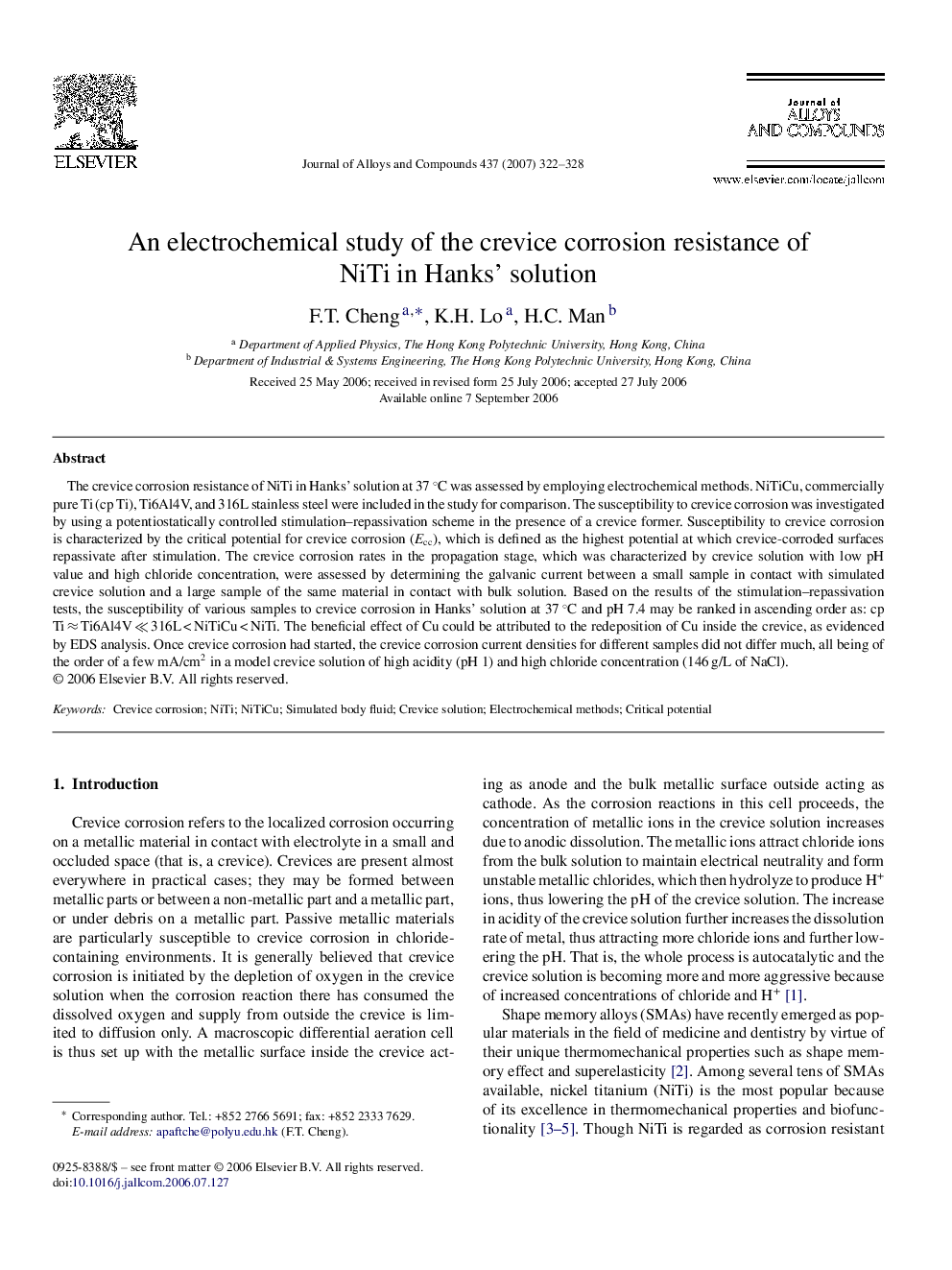| Article ID | Journal | Published Year | Pages | File Type |
|---|---|---|---|---|
| 1626498 | Journal of Alloys and Compounds | 2007 | 7 Pages |
The crevice corrosion resistance of NiTi in Hanks’ solution at 37 °C was assessed by employing electrochemical methods. NiTiCu, commercially pure Ti (cp Ti), Ti6Al4V, and 316L stainless steel were included in the study for comparison. The susceptibility to crevice corrosion was investigated by using a potentiostatically controlled stimulation–repassivation scheme in the presence of a crevice former. Susceptibility to crevice corrosion is characterized by the critical potential for crevice corrosion (Ecc), which is defined as the highest potential at which crevice-corroded surfaces repassivate after stimulation. The crevice corrosion rates in the propagation stage, which was characterized by crevice solution with low pH value and high chloride concentration, were assessed by determining the galvanic current between a small sample in contact with simulated crevice solution and a large sample of the same material in contact with bulk solution. Based on the results of the stimulation–repassivation tests, the susceptibility of various samples to crevice corrosion in Hanks’ solution at 37 °C and pH 7.4 may be ranked in ascending order as: cp Ti ≈ Ti6Al4V ≪ 316L < NiTiCu < NiTi. The beneficial effect of Cu could be attributed to the redeposition of Cu inside the crevice, as evidenced by EDS analysis. Once crevice corrosion had started, the crevice corrosion current densities for different samples did not differ much, all being of the order of a few mA/cm2 in a model crevice solution of high acidity (pH 1) and high chloride concentration (146 g/L of NaCl).
